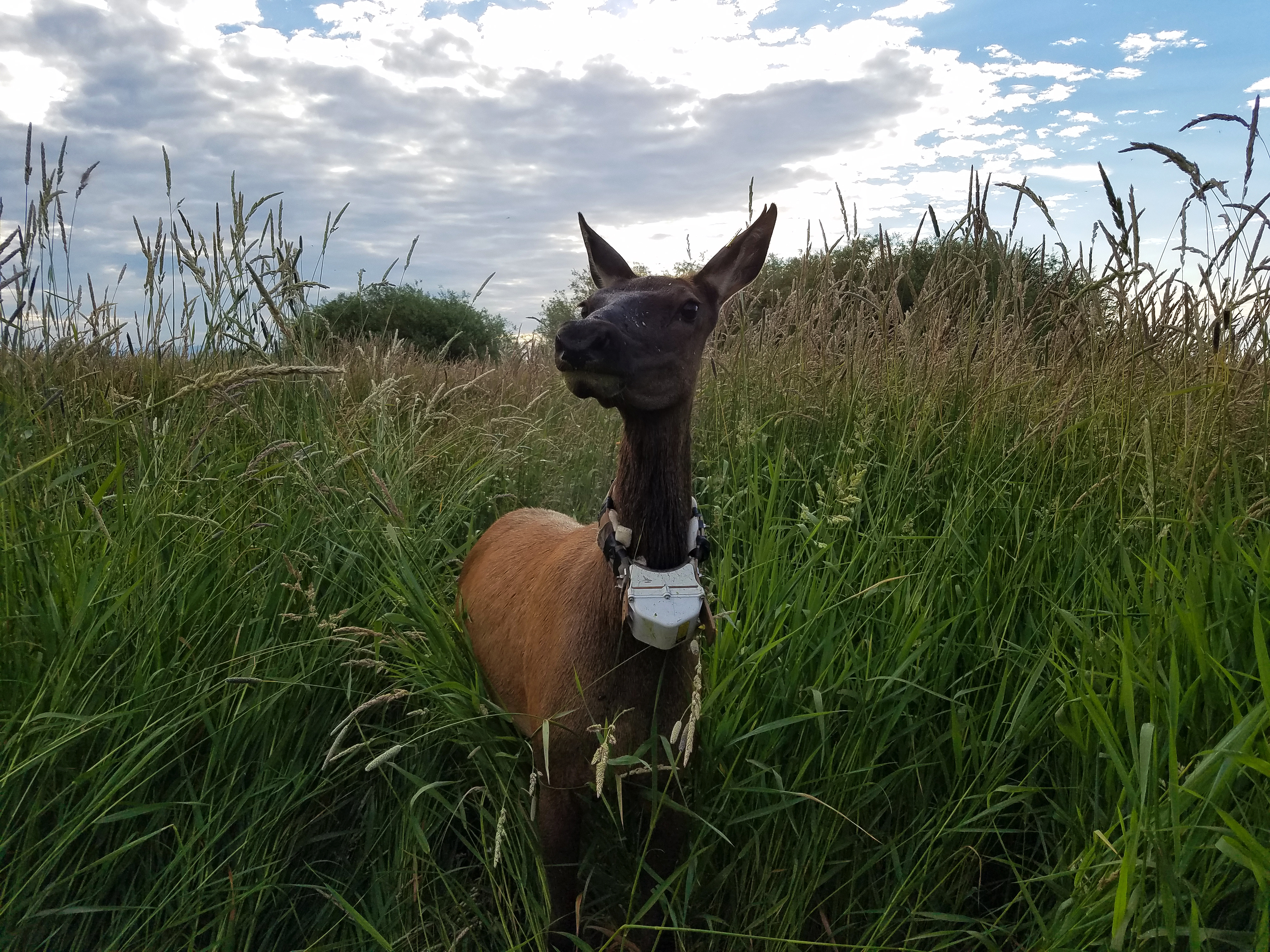Since mid-July, Fish and Game staff have been conducting low-level helicopter flights across south-central Idaho in an attempt to put radio collars on antlerless elk and pronghorn. These flights ranged from the Sawtooth and Wood River Valleys and into the Little Wood River basin and the Little Camas region.

A helicopter lifts off with a crew of biologists working on a project to radio collar pronghorn.
Eight cow elk were radio collared in the Camas Prairie and Little Camas region. All were darted and anesthetized by a Fish and Game biologist from a helicopter. The elk were radio collared to allow Fish and Game biologists to track their movements relative to private property and potential for crop depredation. The collars will remain active for two and a half years.

Radio collared cow elk in the Magic Valley Region.
In late July, 25 pronghorn were radio collared across south-central Idaho. The collared pronghorn, now numbering 50, will be monitored over the next few years to document winter and summer ranges as well as seasonal movement patterns. The pronghorn were captured using a net-gun fired by a Fish and Game biologist from a low flying helicopter. The pronghorn were collared in the Sawtooth Valley near Smiley Creek, in the Wood River Valley near Ketchum, Hailey and Bellevue, Little Wood River drainage, Camas Prairie, Anderson Ranch Reservoir, and Little Camas regions. The collars will remain active for two years.

A pronghorn doe is release after a radio collar is placed by Fish and Game biologists.
Radio collars are a very effective and efficient way for biologist to track wildlife across time and space. If found, collars should be returned to the nearest Fish and Game office.

